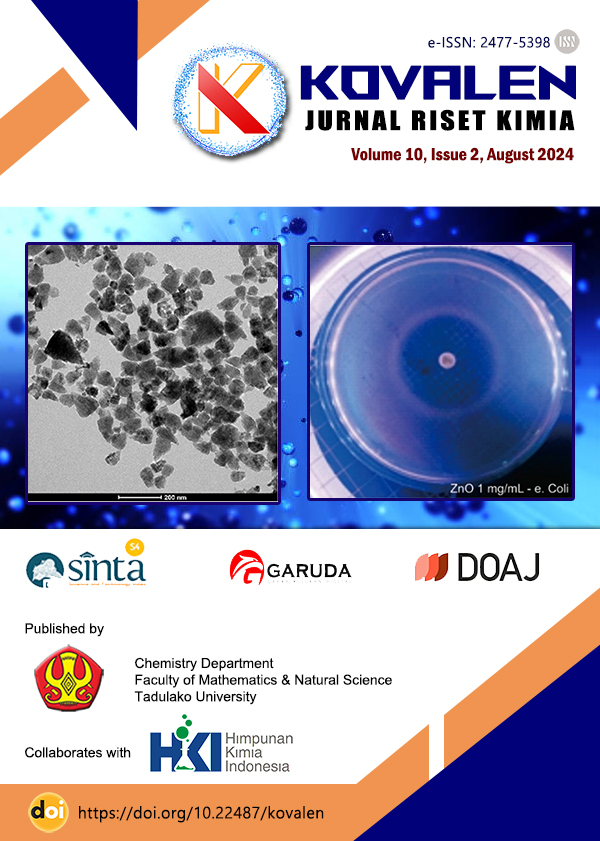Main Article Content
Abstract
Speciation and bioavailability of mercury in the sediments of Palu Bay after the earthquake and tsunami were conducted using fractionation and Diffusion Gradient in Thin Films (DGT). This method has been conducted using sediment samples from the estuary of the Pondo River, Palu. Heavy metal speciation of mercury ions was conducted by looking at the distribution of mercury ions in various species by sequential extraction and heavy metal bioavailability of mercury ions. This method was conducted by looking at the migration of mercury ions from sediments into the seawaters using a Diffusive Gradient in Thin Films (DGT). The speciation of mercury ions concentration with sequential extraction as EFLE (easily, freely, leachable, exchangeable) fraction is about < 0.0005 ppm, the oxidizable fraction is about < 0.0005 ppm and the resistant fraction is between < 0.0005 ppm to 0.0063 ppm. The results of DGT experiments to study the migration of mercury ions from sediments into the seawaters during 3 days of immersion is between 0.01003 ppm and 0.01748 ppm. The availability of mercury ions concentration in the sediments allows for the migration of mercury ions into water.

